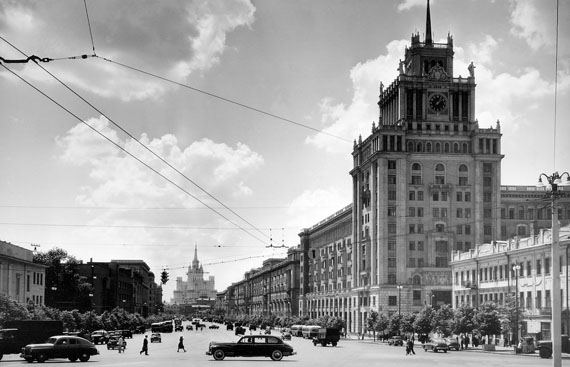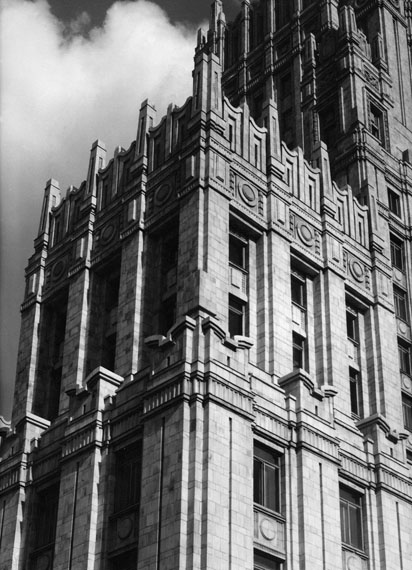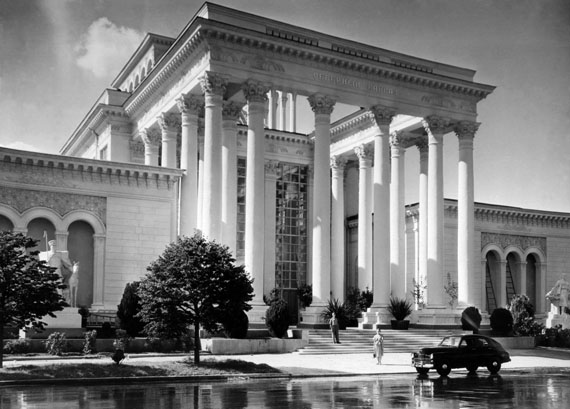
Naum Granovsky »
Grand Style
Exhibition: 2 Dec 2015 – 24 Jan 2016

The Lumiere Brothers Center for Photography
Bolshaya Polyanka street, 61, bld. 1
119180 Moscow
+7 495-228 98 78
Mon-Sat 11-20
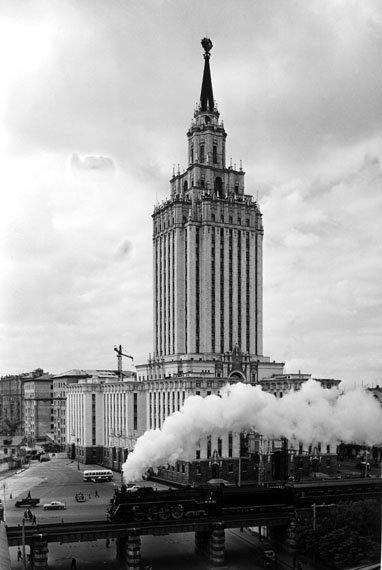
«Naum Granovsky’s Grand Style»
December 2, 2015 – January 24, 2016
>The Lumiere Brothers Center for Photography presents Naum Granovsky’s Grand Style. The exhibition encompasses acknowledged works of the photographer and pictures from his numerous trips across the country, previously unseen by the public. Exploring the legacy of one of the leading architectural photographers of Stalin era, the exhibition will trace the development of representation of Soviet cities in photography and will revisit Granovsky’s Grand Style from the perspective of modern architecture and photography.
Architectural avant-garde which spanned from 1918 to 1932 was followed by era of Stalin’s neoclassicism – Grand style. 1955 marked the beginning of a period of contemporary architecture in its Soviet version. In 1931 Moscow’s reconstruction project was approved, and then ambitious construction program spanning the whole USSR was launched. New projects constituted a definitive break with constructivism and introduced a new ideal, which invoked not principles of rationalism and functionalism but the state power.
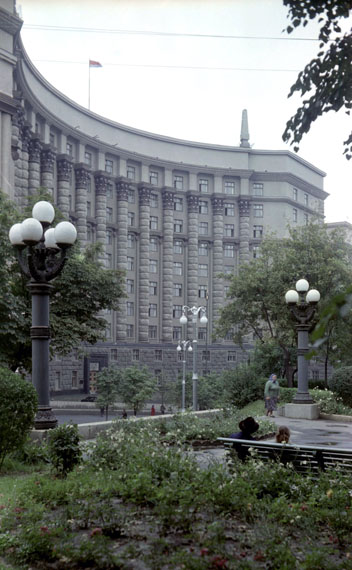
By this time Naum Granovsky has already been working as the chief photographer at publishing house Izogiz, which had photography of architecture and construction, aimed to present a growing and flourishing country, among its priorities. Until the war came Granovsky photographed Moscow a lot. It’s worth noting that Granovsky’s interest in architectural photography was nurtured by his connection with daughter of the famous Russian writer Vladimir Gilyarovsky Nadezhda Vladimirovna Gilyarovsky, who was working as an editor in Izogiz, and her husband art historian Victor Mikhailovich Lobanov, associate fellow of the Art Academy of the USSR. At this time Granovsky formed his academic, delineated style, which was in tune with country’s cultural policy.
After war as a reporter of news agency Telegraph Agency of the Soviet Union (TASS) Granovsky traveled across the USSR (Volgograd, Kiev, Minsk, Smolensk, Vladimir, Kuybishev, Voroneg, Kishinev, Baku, Tbilisi), continuing to photograph his favorite subject Moscow.
High horizon line and viewpoint that enable to show panorama of the city, road receding into the distance, finely calibrated composition are characteristic of Granovsky’s style. As a reporter of the foremost state-owned agency he had permission to photograph from Moscow’s highest points, inaccessible to ordinary citizens. But the point was not only in high viewpoints. Granovsky could teeter on the thin edge, where a cityscape remains authentic and at the same time embodies the symbol of the city.
Granovsky’s cityscapes seem to be in accordance with an architect’s plan. It is an ideal city, in which accidentalities are erased, only the imperial monumentality remains. Granovsky reveals the structure, emphasizing the perfection of the architectural ensemble. His laconic delineated photographs, taken in numerous cities of the USSR, became evidence that plans of life reorganization came true.
The exhibition will encompass more than 100 iconic photographs of Naum Granovsky as well as works that have been discovered for the last 5 years. Each work will be accompanied by an extensive comment written by architectural historians and urbanists, who were working together on this project.�
